
Engine 1
JFRFPD acquired Engine 1 in 2010 through the FEPP program (Federal Excess Personal Property Program & Firefighter Property Program). The engine is a 1994 International 4x4 truck with a 550 gallon tank and dual pumps (technically a Type 3 wildland engine). It is housed in one of the main bays at Station 3.
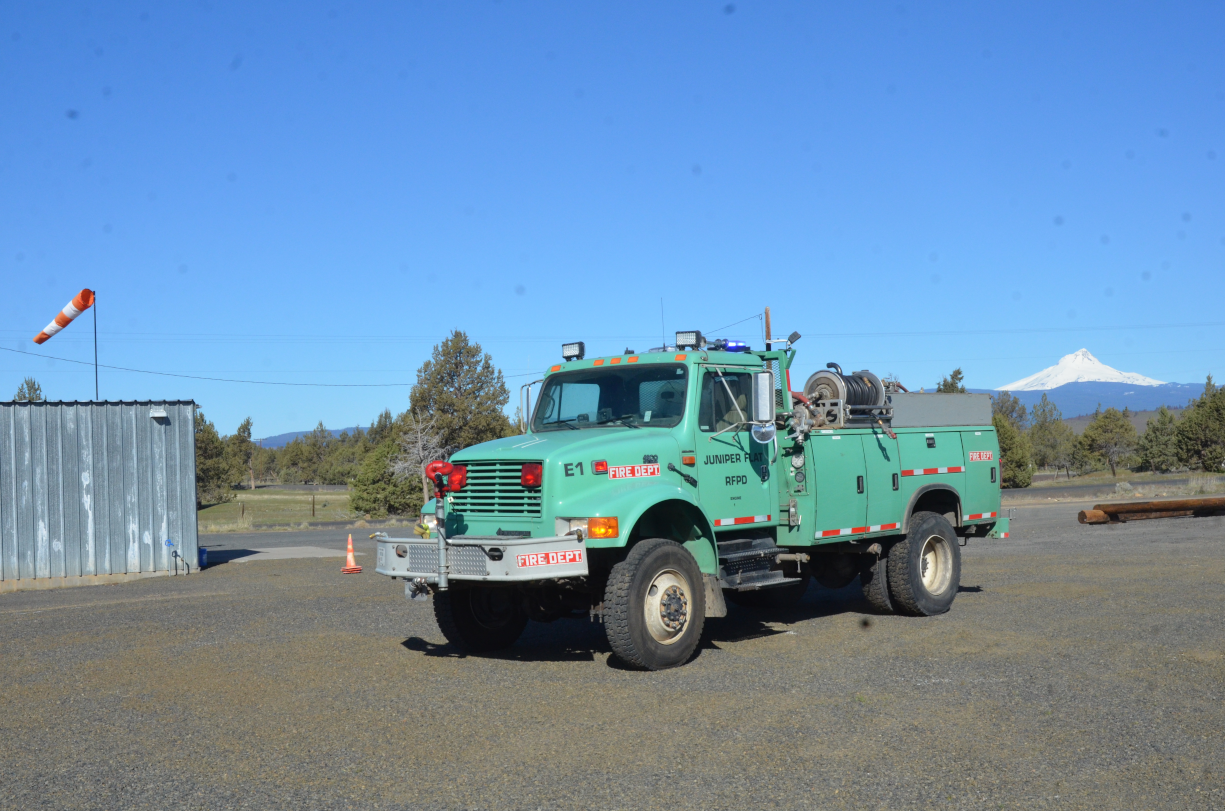
We modified the engine by adding bumper nozzles and a monitor, both controlled inside the cab, to allow aggressive initial attack consistent with our highly-mechanized wildfire fighting philosophy. Engine 1 has been a testbed for innovations, which, when proven useful, might be implemented on other engines. Hence, we describe them in some detail here.
This view of the engine shows the front left bumper nozzle in operation. The two front bumper nozzles (left and right) are used to place a wet line around a fire when the fire is being flanked (counterclockwise or clockwise, respectively) starting from an anchor point and progressing toward the head of the fire. The cone of water from the nozzle is directed forward of the truck and to the side, so that the fire can be approached safely. Operators are trained to direct the outer edge of the cone at the base of the advancing flames, so that the body of the cone falls upon unburned fuel (water delivered to the already-burned area is wasted). The cone of water is delivered with sufficient force for it to penetrate the duff or humus layer of soil extinguishing fire that may be creeping slightly below the surface.
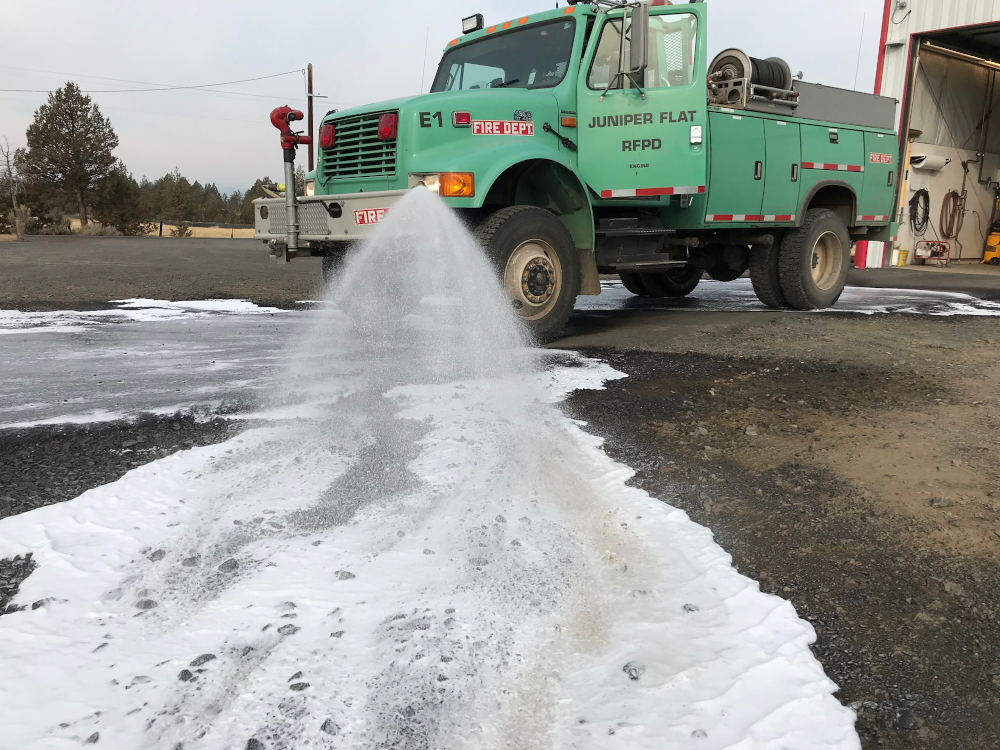
This forward-facing view from inside the cab shows the monitor in operation. The monitor is controlled by a joy stick, allowing the operator to sweep the jet of water side-to-side and up and down to project a wet line beyond barriers like irrigation ditches or rock hollows or extinguish torching trees from a safe distance. Commonly it is directed downward and to the side and used with the matching front bumper nozzle to put more water on a wet line, forward of the bumper nozzle's cone.
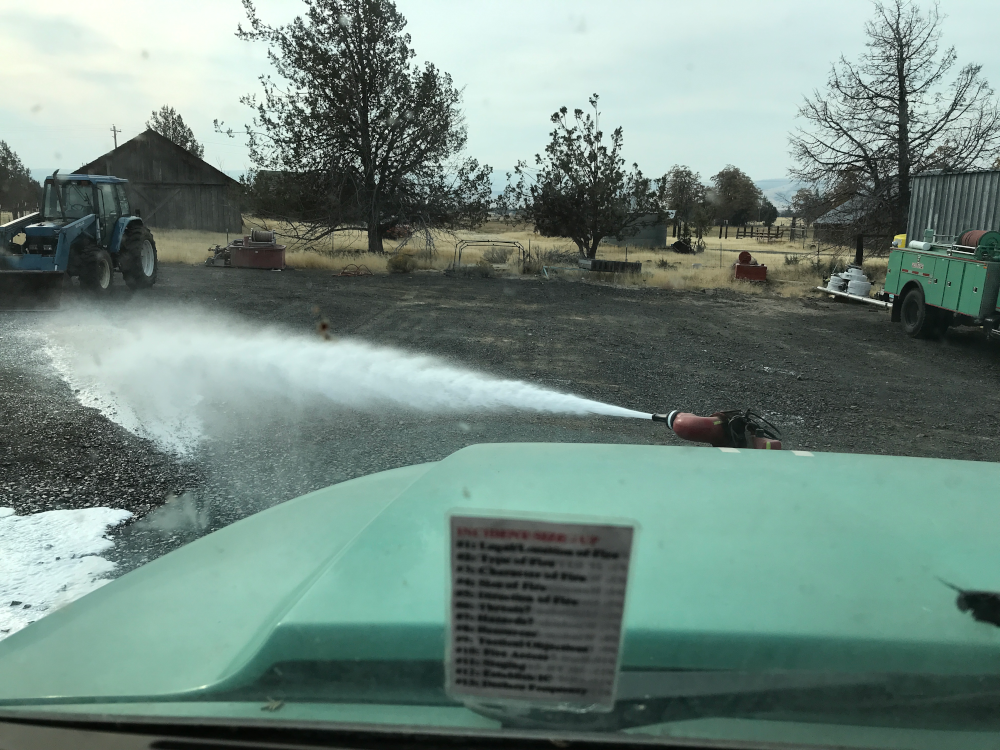
These front downward-directed nozzles are an innovation to assist in laying a wet-line and also to cool the ground over which the engine is driving in the event that the operator decides to drive over recently-burned terrain. They can be used to protect the undercarriage of the engine from hotspots that otherwise might burn through breaklines or other vulnerable engine components and disable the engine.
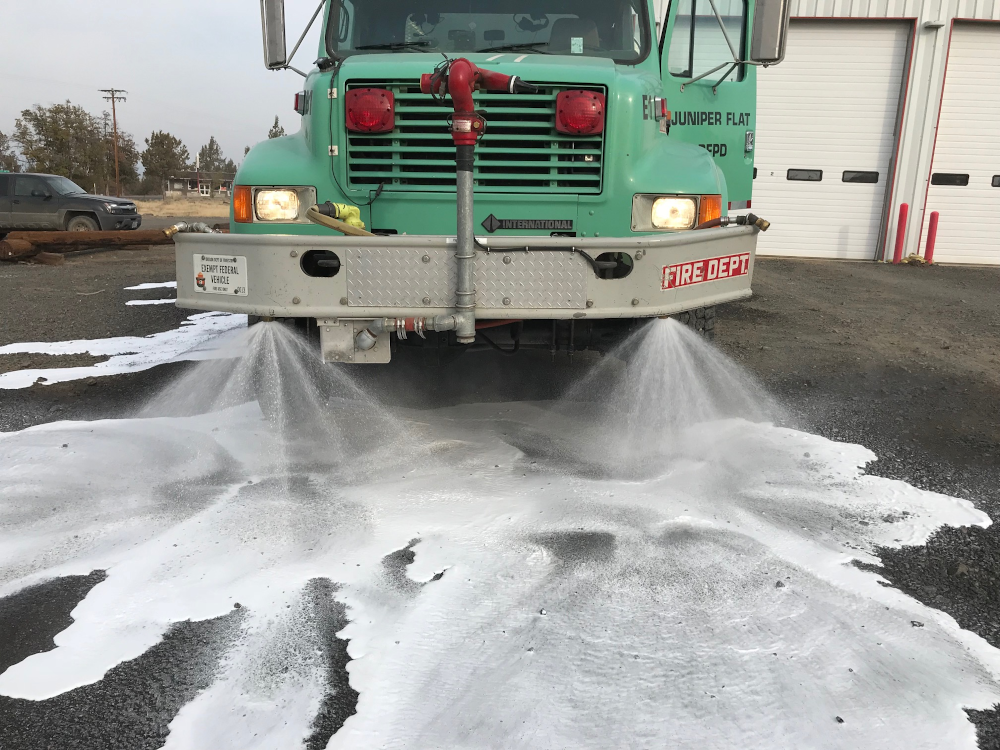
This rear view shows the flanking rear bumper nozzles in operation and the bank of rear-directed nozzles, both of which can be used to lay a wide wet-line downwind of a wildfire to stop fire progression or to provide a secure fireline quickly for backfire operations.
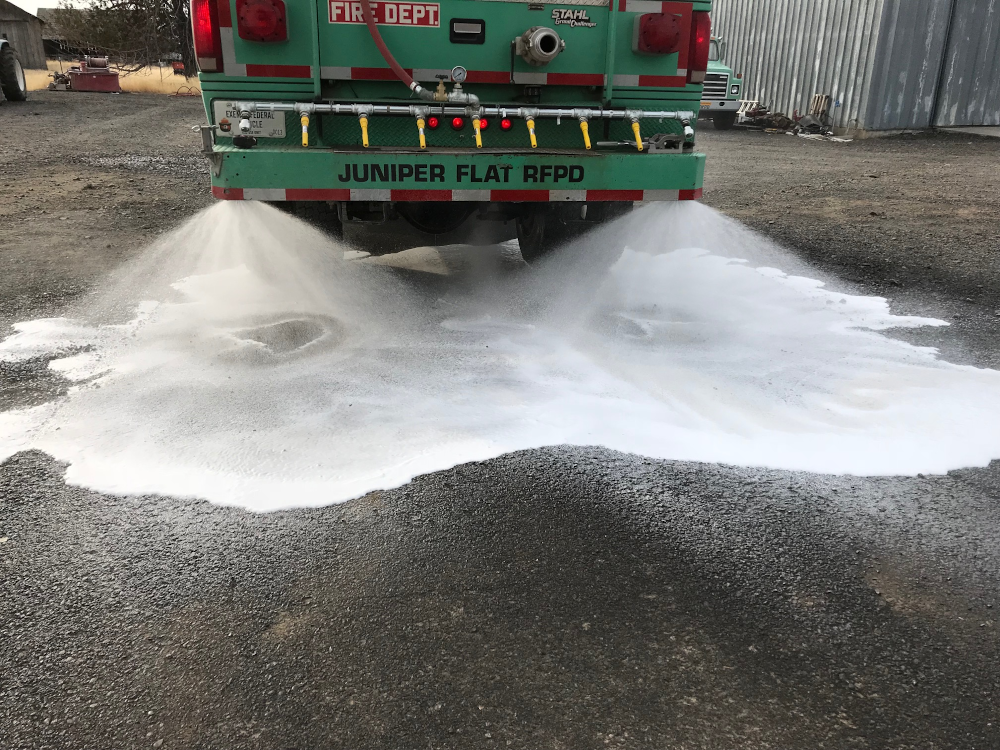
In addition to the nozzles and monitor, Engine 1 is equipped with hose lines for more conventional fixed attack against a fire that might not be accessible for running attacks (as off a highway through a bar ditch and fence line, or in a dense forest). The engine has a 1 1/2" diameter "blitz attack" line preconnected to the water system of the engine with a nozzle to allow rapid deployment, as in, for example, suppression of an incipient fire set along a highway. It also has a quicklay line comprised of 8 100' segments of 1 1/2" hose with inline tees (connections for lateral lines branching from the main line) and cutoff valves between segments. This 800' long pre-assembled line is carefully folded in a long box on top passenger side of the engine; due to the way it is packed in the box, it can be pulled from the end of the box without twisting or tangling. This line can be pulled quickly for use as a main supply line and extended with additional 1 1/2", 100' hose packs, seen stored in one of the engine compartments in the photo below:
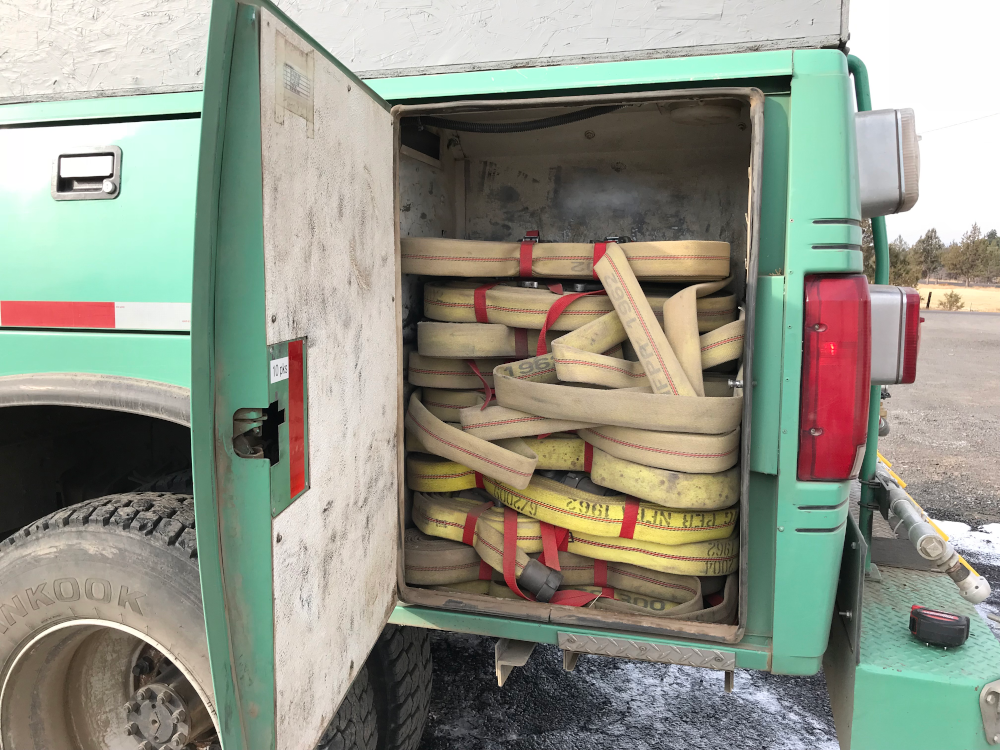
These hose packs are tightly wound to allow firefighters to carry them (with loops slung over their shoulders) to the head of the progressive lay line and thence to extend the line by (up to) another 1000' (the engine carries 10 100' packs). The inline tees at 100' intervals in the progressive lay line allow 100' long 1" lines (laterals) to be connected at 100' intervals. These are used in flexible continued attack or mop-up without having to drag the heavy main line around once it is charged. Typically we attempt to surround the fire with the main supply line and use the laterals to suppress the fire where needed. The lateral lines also are formed into packs readily carried over the shoulder. They are stored in another engine compartment as shown in the photo below:
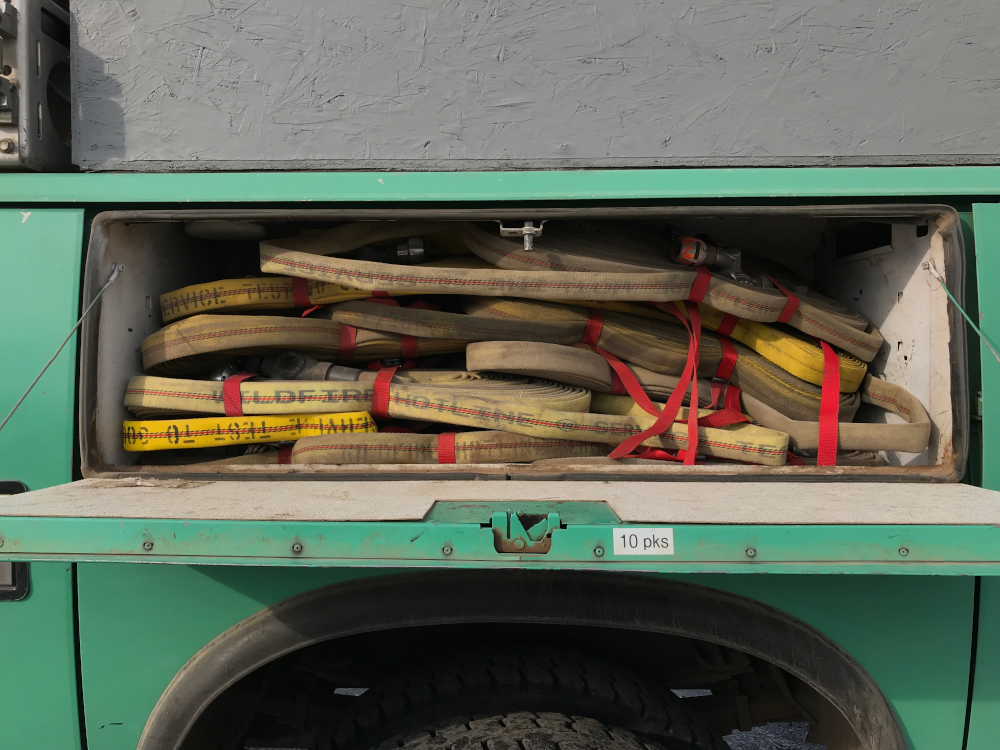
Finally, the engine has another 800' main line comprised of 8 100' lengths of 1 1/2" hose stored atop the engine in a long box on the driver's side. This line does not have inline tees and cutoff valves between segments, and is used as a main line, extending the reach of fire suppression from the engine in rough or obstructed terrain, or to connect this engine to a tender for increased water supply. The photo below shows the main line folded in its box on the left and the quick lay hose folded in its box on the right.
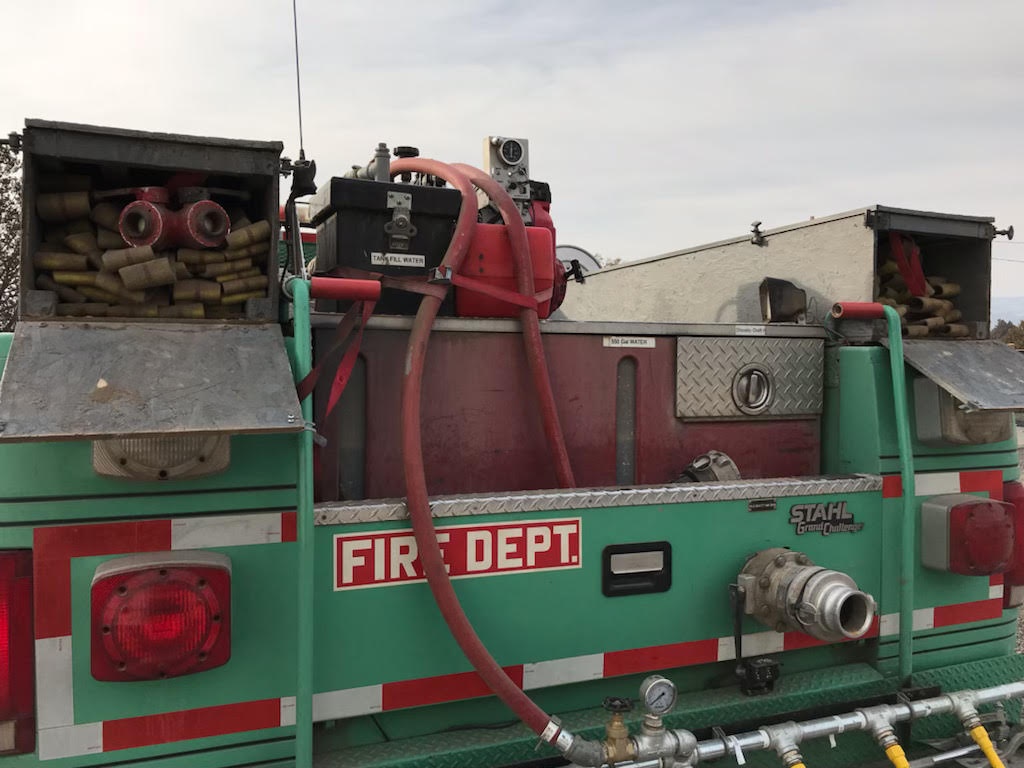
In total, Engine 1 has 4,000 feet of wildland hose.